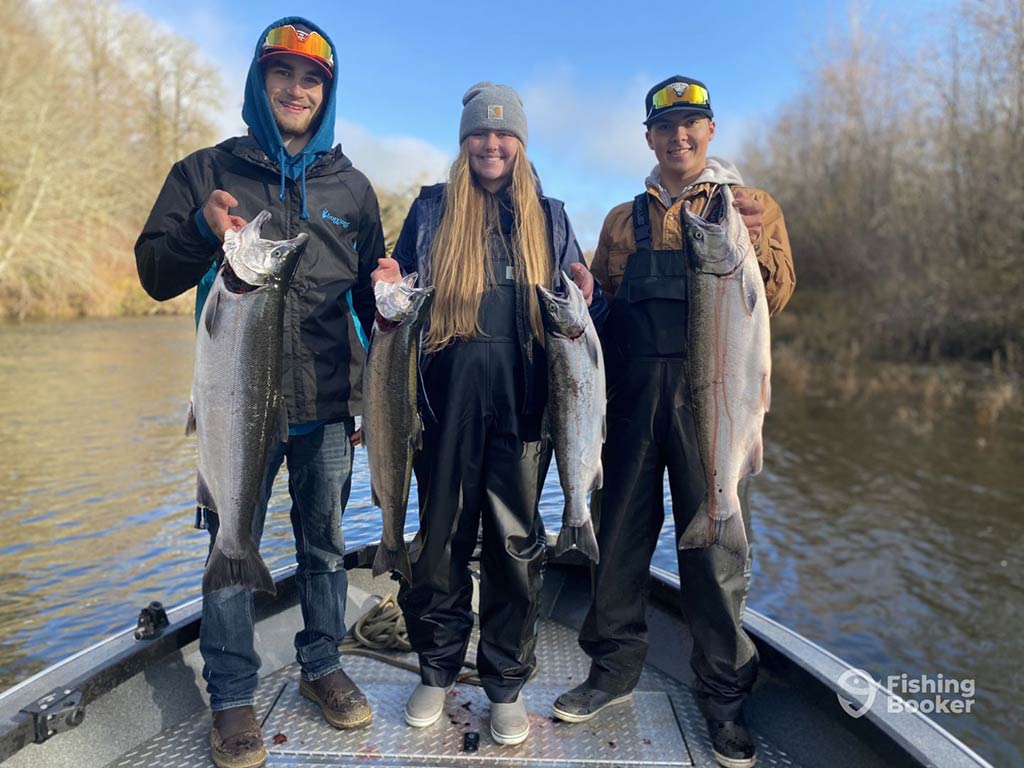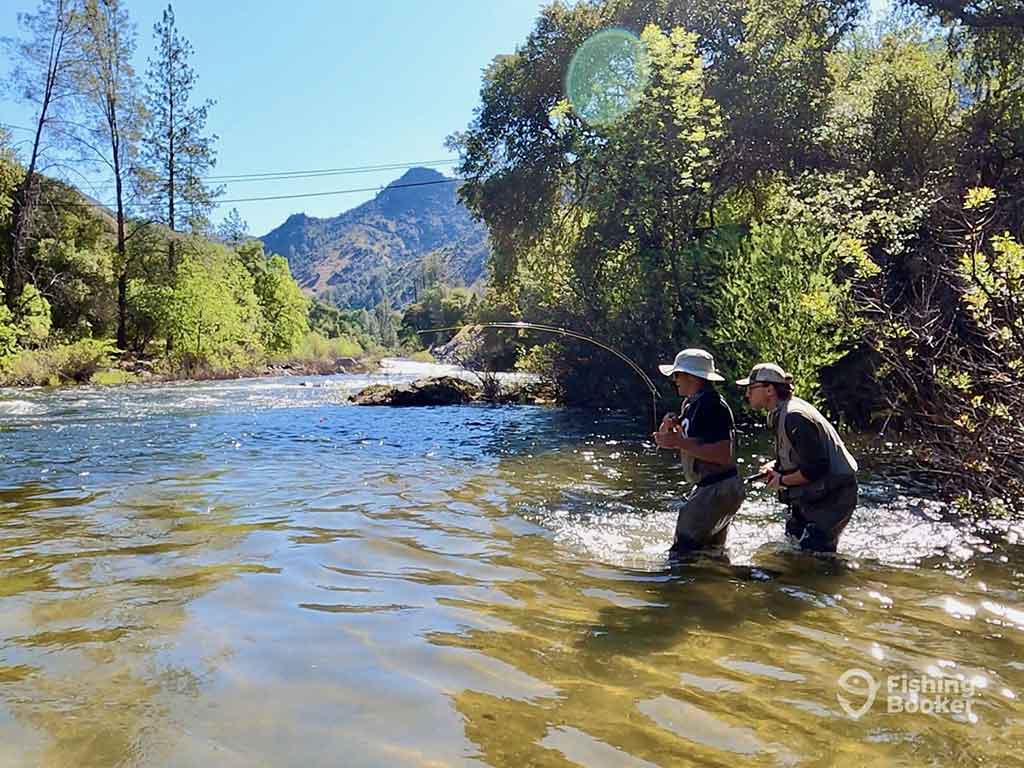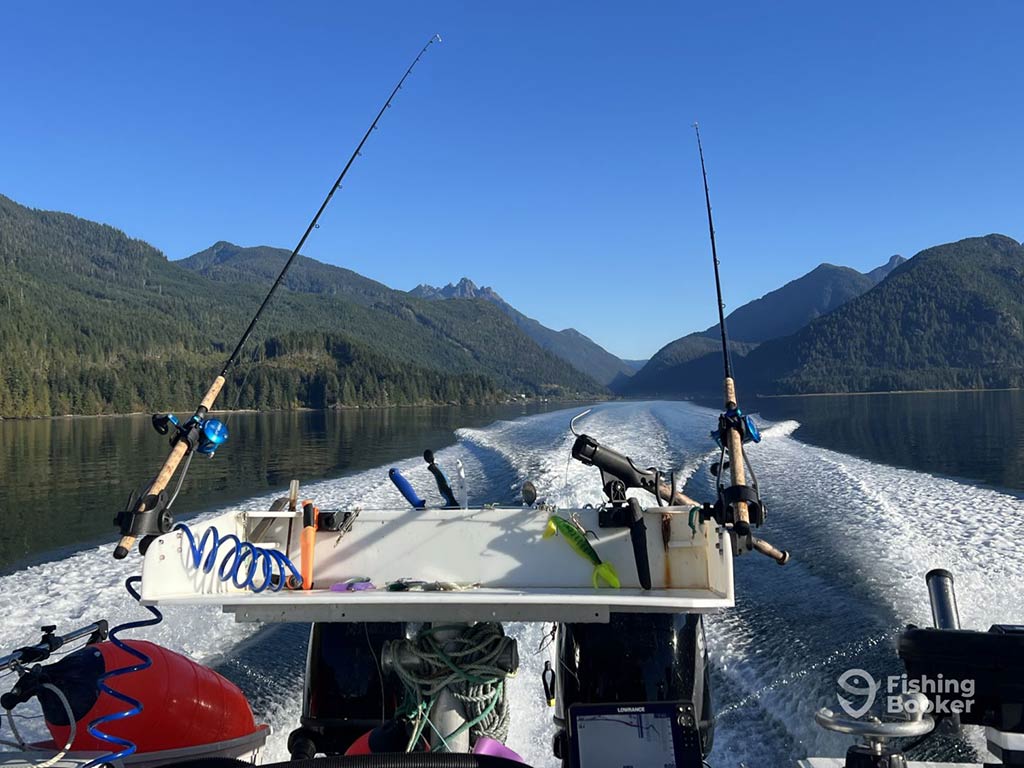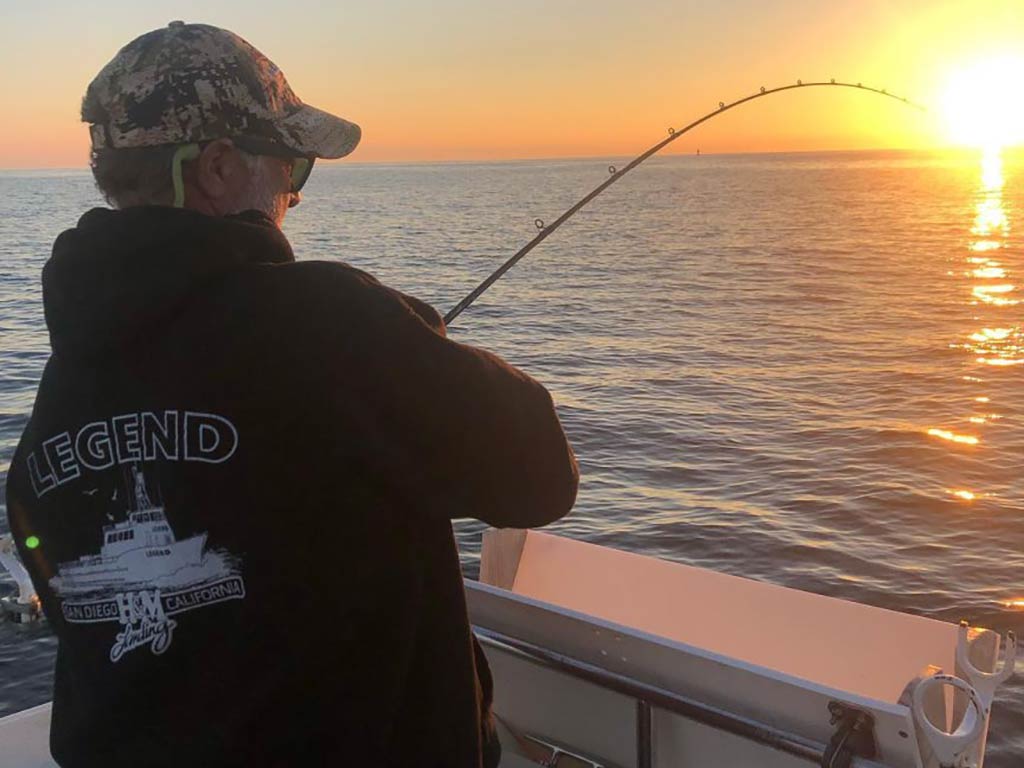Nothing beats the thrill of a Salmon on the end of your line. Hit the water at the wrong time, however, and you’ll never know what you’re missing. Anyone who’s anyone will tell you, you need to understand the Salmon fishing seasons to get in on the action.

Their annual migrations are quite literally what make these fish tick. They’re born in freshwater streams and rivers, then migrate out to sea where they spend most of their adult lives. Several years later, they return to the same freshwaters where they were born to spawn – and after that, many die.
But it’s not just the Salmon’s livelihood that depends on their migration. For millennia, it was also our own! The earliest records of Salmon fishing in North America date back over 10 thousand years. To indigenous communities, they were – and still are – nothing short of sacred. So when you fish for them, you aren’t just paying homage to the Salmon’s lifecycle, you’re carrying on an ancient legacy.
When is the best time to fish for Salmon?
To time your trip right, you need to tap into this species’ migration pattern. Their journey from freshwater to saltwater and back again forms the basis of Salmon fishing seasons.
Spring typically marks the onset of Salmon season, as they make their way back to their home rivers. By summer, the spawning run is in full swing. Some species continue to pass through the area well into fall, marking a second peak before the end of the season. While Salmon are generally scarce in winter, some areas host juvenile populations at this time.

Just bear in mind that this is a broad generalization. The best time for Salmon fishing near you will depend on your location and the exact species there. Out of the six species in North America, five are native to the West Coast – the aptly named Pacific Salmon. Of these, Chinook and Coho Salmon are the most widespread, and they’re also first to appear on the scene. In some areas, Sockeye, Pink, and Chum Salmon show up in the months that follow.
And then there’s Atlantic Salmon, which is more closely related to Trout. They’re most common on the opposite side of the country, with some overlap in and around the Great Lakes. They typically spawn late in the fall.
There’s one caveat to all this, which is whether you’re fishing in coastal waters or a lake. With nowhere to go, landlocked Salmon stay present year-round, but you may need to work a little harder to find them in winter.
And, as always, local regulations play their part. Just because the Salmon are in season, don’t assume it’s legal to catch (or keep) them! Consult your local Wildlife authority beforehand, or hire a local guide.
With all that said and done, here’s a more detailed look at Salmon fishing seasons to help you plan your trip:
Spring

April and May are the months when many Salmon do indeed spring into action. Chinook are the first to arrive in rivers of the Pacific Northwest, such as the Columbia, Klamath, and Sacramento. Anglers love these early-run “Springers” due to their fighting spirit and hearty fat content.
Ocean fishing for Salmon along the Oregon and California coasts opens up around the same time. This is when you’ll see local anglers trolling offshore to catch the fish as they’re heading inland.
Summer

Summer heat brings even hotter action. By this time, Chinook and Coho runs are in full swing from Alaska to Washington. Meanwhile, Sockeye start swarming waters like the Kenai River.
And then there’s Pink Salmon – a little bit of a wild card. They pop up every other year, just to keep things interesting. Throughout much of the Pacific Northwest, you can expect them to appear in years that end in an odd number. Meanwhile, the far northern reaches of British Columbia see them in years that end in an even number. Either way, the peak season is short and explosive. If you’re looking for great light tackle fishing, be sure to strike while the iron’s hot in late July and August.
On the other hand, Atlantic Salmon are just beginning their upstream migration along the East Coast and further afield in Canada, Scotland, and parts of Scandinavia.
Fall

Don’t pack your rods away just yet, because the Salmon frenzy continues further inland. In fact, fall offers some of the best river fishing all year. Coho and Chinook flood many freshwater systems at this time, from Alaska down to Northern California. The same can be said for the Great Lakes region.
In Washington and British Columbia, Chum Salmon reach their peak in late fall. These “Dog Salmon” may be the underdogs of the family, but don’t overlook them – they’re aggressive feeders and a favorite among fly anglers.
Atlantic Salmon also begin to spawn at this time, making fall a great time to fish for them around the Great Lakes and parts of the East Coast.
Winter

Winter is typically the slowest season for Salmon fishing. Most species have completed their spawning runs, but in some rivers of the Pacific Northwest, you can still catch late-run Chum and winter-run Chinook. This is particularly true in southern Oregon and Northern California. You can also catch juvenile Chinook (aka “Blackmouths”) all winter in Washington’s Puget Sound.
You can still access landlocked Atlantic Salmon too, in northeastern lakes that are deep enough. Just be prepared to brave the cold for some ice fishing.
Best Salmon Fishing Spots

Now you have some idea when to go Salmon fishing. But, just as importantly, where should you go? From saltwater bays to glacier-fed rivers, here are some top destinations:
- Alaska. Home to the world’s most prolific Salmon runs, Alaska offers a shot at all five Pacific species. The Kenai River is famous for massive Chinook, while Bristol Bay is legendary for its Sockeye runs. There’s also the Prince William Sound, which hosts Coho and Pink Salmon during late summer, and there are plenty more Salmon hotspots across the state!
- British Columbia. BC is a hotspot for Pink, Sockeye, and Coho, and also boasts solid Chinook runs. The Fraser River is the main highway for Sockeye, while Vancouver Island is packed with charters targeting ocean-bound Coho and Chinook. Meanwhile, the island’s Campbell River lays claim to legendary “Tyee” Salmon – these are Chinook that weigh 30 pounds or more.
- Washington State. Between Puget Sound and the mighty Columbia River, Washington offers exceptional Salmon fishing in both freshwater and saltwater. Depending on the season, you can catch any of the five Pacific Salmon species. If you miss the peak season, there will still be Blackmouths biting in Puget Sound.
- Oregon. The most famous Salmon fishing in Oregon is arguably the most famous Salmon fishing in the entire country. And it takes place every August at the Buoy 10 fishery near Astoria. This is where the Columbia River meets the Pacific, giving you the chance to catch Chinook and Coho as they transition between freshwater and saltwater.
- California. The Sacramento River is famous for its spring and fall Chinook runs, along with the occasional Coho. Then again, San Francisco Bay and the ocean waters just beyond can’t be beat when it comes to saltwater fishing with incredible views.
- Great Lakes. While you can find various Salmon species throughout the Great Lakes, Lake Michigan and its tributaries are second to none. Stocked populations of Chinook, Coho, and Atlantic Salmon provide some of the best inland Salmon fishing anywhere in the world.
How to Fish for Salmon in Different Seasons
Different seasons call for different strategies. Changing your approach is what makes Salmon fishing so varied and, of course, so fun!

With a surge of activity in spring, this is the time to cover as much water as you can. And that means trolling. Offshore, anglers often troll herring or anchovy behind a flasher. In rivers, you’ll have success back-trolling Kwikfish or drifting cured roe.
Mooching and trolling are still the dominant techniques come summertime, particularly if you’re fishing for Chinook and Coho in saltwater. Anglers swear by cut-plug herring and hoochies, especially when fishing near river mouths and estuaries. On the rivers, drift fishing with roe sacks or beads can be a great way to catch Sockeye and early Coho. This is also a good time for fly anglers to hit the water. Cast small, flashy patterns with a quick retrieve to target Pink and Sockeye Salmon.

By fall, freshwater fishing is the name of the game. The best method at this time of year is drift fishing, with cured eggs, soft beads, or jigs. Fly anglers can also score big by swinging leech patterns or egg-sucking buggers through deeper runs where Chum and Coho stack up. As Salmon near the end of their lifecycle, they feed less aggressively, making precision and presentation key to enticing strikes.
In winter, focus on deep pools in rivers where late-run Chinook or winter Chum may be holding. Cold water temperatures slow these fish down, so a patient and methodical approach is essential. Cured eggs, sand shrimp, or jigs under a float can be effective when presented slowly. If you’re targeting landlocked Atlantic Salmon, try jigging spoons or using downriggers to reach the deeper layers where these fish gather.
Salmon Fishing Seasons FAQs
Salmon Fishing Seasons: Cycles That Feed Generations

With so many species and multiple runs each year, there’s no shortage of opportunities to catch your bucket-list Salmon. But timing is everything, whether you’re trolling for massive Chinook, swinging flies for Atlantic Salmon, or wading through remote waters of the Pacific Northwest.
At the end of the day, you’re tapping into much more than some fish habits. Remember that humans have harvested these species for ages, making Salmon fishing seasons a crucial part of our own history. As you follow these fish through their migrations, you’re following in our ancestors’ footsteps.
What’s your favorite Salmon fishing season? Do you maybe have some tips for beginners? Reach out in the comments below!
